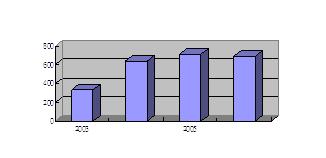
(I) Studies on Safety of Fresh Fruits and Pre-cut Fruits
To eat more fresh fruits is healthy and to wash them thoroughly is easy.
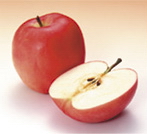
Fresh fruits and vegetables contain nutrients, vitamins, minerals and dietary fibre, which are essential for human growth and health. In recent years, the people of Hong Kong are becoming more and more health-conscious. There is a large variety of fruits on the market and pre-cut fruits are available in supermarkets, and served in Western and Chinese restaurants as well.
You may be very concerned about whether pesticide residues (commonly called pesticides) and heavy metals are present in fresh fruits. Long-term intake of excessive pesticides and heavy metals certainly damages health. Consumption of pre-cut fruits contaminated with pathogens (such as Salmonella and Staphylococcus aureus) may cause food poisoning. In this connection, the Centre for Food Safety (CFS) has recently conducted two studies on fresh fruits to assess the potential hazard associated with pesticide residues, heavy metals as well as their microbiological quality, and the risk posed to public health.
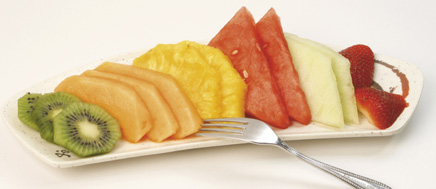
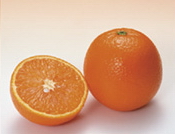
In the study, CFS collected over 300 fresh fruit samples from retail outlets for testings on some 50 pesticides and 7 heavy metals and some 100 pre-cut fruit samples for testings on microbiological quality (including Escherichia coli, Salmonella and Staphylococcus aureus).
Test results of all fresh fruit samples and pre-cut fruit samples for pesticide residues, heavy metals and microbiological quality were satisfactory.
Nevertheless, foodborne illness outbreaks linked to fresh fruits and vegetables had occurred in other places over the past few years. The trade should take note of the following when handling pre-cut fruits to prevent contamination and/or bacterial growth:
- The skin or rind of fresh fruits is a natural barrier for microorganism which, if damaged, may lead to microbial invasion and growth in the flesh underneath.
- The skin or rind of fresh fruits may be contaminated with pathogens. If fruits are not washed before cutting and peeling, pathogens on the skin or rind may be transmitted to the flesh through the knife. This may even lead to food poisoning.
- Unhygienic handling and processing of fresh fruits especially during cutting, slicing or peeling will increase the chances for the invasion or growth of pathogenic microorganisms and also the risk of transmission of foodborne illness.
- If pre-cut fruits are left at room temperature for too long or improperly stored, microorganisms are likely to multiply quickly in the flesh. Some of the microorganisms may even produce toxins.
To ensure fresh fruits (especially pre-cut fruits) are safe to eat, the trade should note the following:
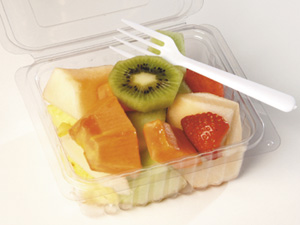
- Purchase
- Purchase fruits from reliable sources.
- Inspect the fruits upon delivery to ensure that they are not bruised or damaged. Reject fresh fruits that are grossly contaminated with dirt, soil or other organic matter.
- Storage
- Keep fresh fruits separate from non-ready-to-eat foods (such as raw meat) in the refrigerator.
- Adopt "first-in-first-out" approach.
- Handling of food
- Allocate a specific work area as well as designated equipment and utensils to handle pre-cut fruits to prevent cross-contamination.
- Use separate cutting boards and knives that are properly cleaned and sanitised for ready-to-eat foods to handle fruits.
- Maintain good personal hygiene practices. Wash hands with liquid soap for at least 20 seconds before handling food or after using toilets. Persons with symptoms of infectious disease like gastroenteritis or influenza should not handle food.
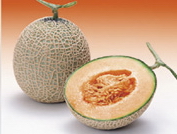 The skin or rind of fruits may be contaminated with pathogens. Therefore, before processing fruits or serving, wash the surface of the fruits, including those with skins or rinds that will not be eaten (such as longans), thoroughly under running water. Scrub firm-skin fruits (such as melons) with a clean brush if necessary.
The skin or rind of fruits may be contaminated with pathogens. Therefore, before processing fruits or serving, wash the surface of the fruits, including those with skins or rinds that will not be eaten (such as longans), thoroughly under running water. Scrub firm-skin fruits (such as melons) with a clean brush if necessary.- Refrigerate cut fruits immediately at 4°C or below until sold.
- When transporting pre-cut fruits (especially for a long distance), use vehicle with refrigerating equipment or put the pre-cut fruits in insulated container.
- Display of pre-cut fruits
- Display pre-cut fruits at 4°C or below. Discard cut fruits kept at ambient temperature for more than two hours.
- Inspect prepackaged cut fruits on a regular basis for damage or spillages. Any poor quality fruits should be disposed of immediately.
In conclusion, according to the findings of the studies on fresh fruits and pre-cut fruits conducted recently by CFS, all samples are safe for human consumption. CFS suggests the trade to offer more varieties of fruits and substitute fruits for desserts in their menu.
* For updated advice, please visit the webpage on Food Safety Tips for Fruits and Fruit Products
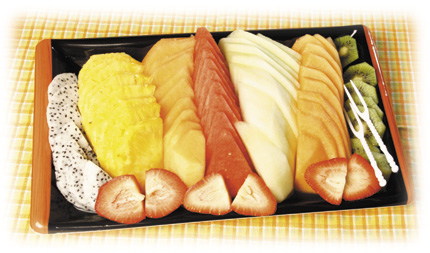
(II) Observe Food Safety Rules And Be Vigilant Against Food Poisoning
Bacterial food poisoning cases
from 2003 to 2006
Source: Centre for Health Protection
According to the Centre for Health Protection (CHP) of the Department of Health, there was an increase in the number of bacterial food poisoning cases during the period from 2003 to 2006. Since raw food may carry pathogenic bacteria, consumption of raw food or food items not thoroughly cooked poses a higher risk of food poisoning. Foods stored at temperatures favourable to the growth of bacteria or production of toxin over a long time is also prone to cause food poisoning. Common bacterial food poisoning cases in Hong Kong are mostly caused by bacteria such as Vibrio parahaemolyticus, Salmonella and Staphylococcus aureus.
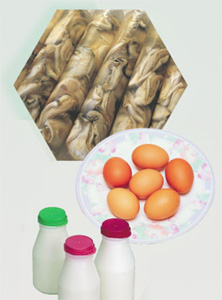
Bacteria Files
- Vibrio parahaemolyticus Vibrio parahaemolyticus is a kind of bacterium naturally found in the marine environment and seafood. Marine products are easily contaminated by Vibrio parahaemolyticus. Symptoms of food poisoning caused by Vibrio parahaemolyticus include diarrhea, abdominal pain, nausea, vomiting, fever etc.
Salmonella
- Salmonella is usually found in the intestinal tract of human and animals. Food items easily contaminated by Salmonella include meat, poultry, milk, eggs and egg products. Symptoms of food poisoning caused by Salmonella include abdominal pain, diarrhea, nausea, vomiting, fever etc.

Staphylococcus aureus
- This bacteria is frequently present in human skin, hair, nasal cavity, throat and wounds. Foods (e.g. lunch boxes, cakes, pastries, sandwiches) which have been subject to various handling procedures, with no subsequent cooking or reheating before consumption, are easily contaminated by Staphylococcus aureus. Symptoms of food poisoning caused by Staphylococcus aureus include nausea, vomiting, abdominal pain, diarrhea etc.
The best way to prevent bacterial food poisoning is to observe proper food hygiene practices at each preparation stage. In particular, we should take note of the following points:
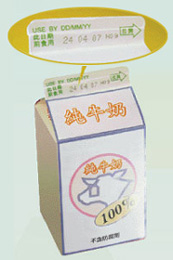
Purchase and Storage of Raw Materials/Ingredients
- Purchase food from reliable sources.
- Check the goods upon delivery. For instance, inspect whether the packaging of packaged food is intact and the "Use By" or "Best Before" date on the label.
- Do not buy food that looks abnormal (e.g. swollen or dented canned food).
- Food should be stored on a "first-in-first-out" basis.
Food Handling

- Raw food, especially meat and seafood, must be washed and cooked thoroughly.
- Wash hands with liquid soap for at least 20 seconds before handling food, or after going to the toilet or touching dirty things, e.g. clearing the refuse.
- Staff infected with communicable diseases such as gastroenteritis or influenza must not handle food to avoid spreading of pathogens.
- Cuts or wounds, if any, should be covered with waterproof plaster before handling food.
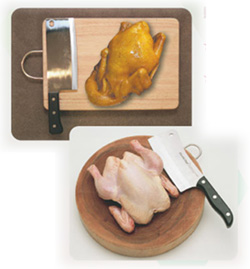
Food Storage
- Cooked food and raw food should be prepared and stored separately to avoid cross-contamination.
- Cooked food and raw food should be stored at different racks in the refrigerator. To avoid cross-contamination, raw food should be put below cooked food.
- Cooked food not for immediate consumption should be stored at or below 4℃ or at or above 60℃. Do not store food at room temperature to minimise bacterial growth.
(III) Nutrients in food – Fat and health
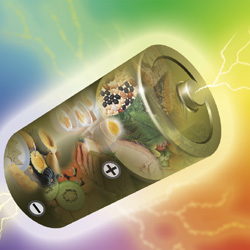
Many people in Hong Kong usually link fatty foods with obesity. We may have questions like "What are the nutritional value and function of fat? How does fat affect our health?".
Fat, also known as triglycerides and composed of glycerol and fatty acids, is a class of lipids. Fat can be divided into saturated fat and unsaturated fat, depending on their chemical structures. Unsaturated fat can be further divided into mono- and poly-unsaturated fats. Edible fats and oils, butter, margarine, salad dressings, fried foods and high fat animal products are of high fat content.
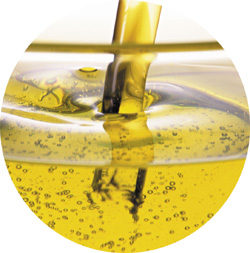
High-fat foods are generally regarded as high-calorie (also known as "energy") foods, as the calorie provided by fat is higher than that provided by carbohydrate and protein (1 gram of fat provides 9 kcal while 1 gram of carbohydrate or protein provides 4 kcal). Besides providing energy, fat carries fat-soluble vitamins (i.e. vitamins A, D, E and K) and protects organs against shock. Hence, fat is essential in our diet.
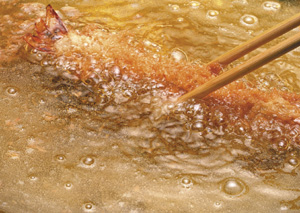
However, excessive intake of fat has been linked to major health problems, such as increased risks of cardiovascular diseases, obesity and certain types of cancers. The Food and Agriculture Organization of the United Nations has recommended not more than 30% of daily energy intake should come from fat source. Based on the daily energy intake of 2 000 kcal, the intake of fat should not be more than 65 gram.
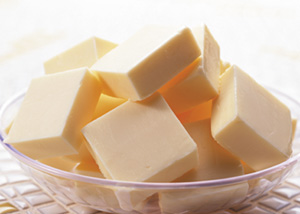
To know more about the fat and nutrient contents of food you are about to purchase, read the information on the nutrition label when you do your shopping.
Food Safety Tips
Safe manufacture of soy sauce and bottle lid design
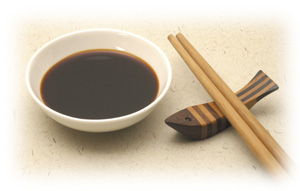
The various kinds of soy sauce available in the market are made by fermentation. They taste delicious, and are used in cooking, marinating or for dipping and can enhance the colour, aroma and flavour of foods.
In 2006, the Centre for Food Safety (CFS) received some 20 complaints about the presence of larvae inside bottled soy sauce. Investigation found that they were mainly the larvae of flies, and there were adult flies in some complaint articles.
The smell of fermented food (including soy sauce) is especially attractive to flies. If the soy sauce is not properly covered, flies may find their way into the container and lay eggs (some species may lay larvae) in the soy sauce.
With advanced plant facilities, modernised production technique, scrupulous production process and full attention paid to personal and environmental hygiene, the presence of larvae in the manufacture of soy sauce can be effectively prevented to meet the customer need and to comply with the requirements of the legislation. In 2006, no complaint about larvae found in unopened bottled soy sauce was received by the Centre for Food Safety.
To prevent the breeding of flies in bottled soy sauce, CFS has written to soy sauce manufacturers and importers, advising them to improve the lid design of soy sauce bottles so as to make them more user-friendly, and to remind consumers, by means of product labels, to close the lid tightly and clean the bottle thoroughly after use and to store the product properly. Members of the trade should pay attention to the following advice to ensure food safety and hygiene.
Advice to soy sauce manufacturers
- Improve the technique, production process and plant facilities in the manufacturing of soy sauce with special attention to personal and environmental hygiene.
- Personnel in-charge of the plant should conduct pest survey regularly and take effective measures to prevent the breeding of pests (including flies).
- Improve the lid design of soy sauce bottles to make them more user-friendly.
- Remind consumers in the product labels, to close the lid tightly and clean the bottle thoroughly after use and to store the product properly.
Advice to the catering trade
- Close the lid tightly and clean the soy sauce bottle thoroughly after use.
- Store and cover soy sauce properly after opening.
Food Trade Update
Voluntary Enrolment Scheme for Poultry Egg Importers/Wholesalers/Distributors
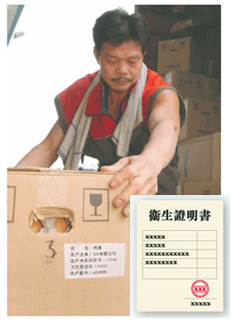
With the detection of a prohibited dye Sudan Red in eggs supplied to Hong Kong from the Mainland last year, the Centre for Food Safety (CFS) promptly reached a consensus with the State General Administration of Quality Supervision, Inspection and Quarantine (AQSIQ) to step up control over the import of poultry eggs to Hong Kong . The Hong Kong Special Administrative Region Government (HKSARG) will expedite the legislation process to further regulate the import. Proposals include the requirement for poultry egg importers to be registered in advance, the requirement of prior import permission for egg imports and the requirement for each import consignment to be accompanied by a health certificate.
In the meantime, CFS has implemented the following measures to enhance the transparency in the sale of poultry eggs, with a view to trace the source more efficiently in the event of food incidents involving imported poultry eggs.
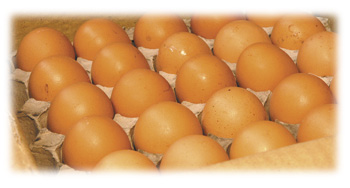
- A voluntary enrolment scheme has been launched for poultry egg importers/ wholesalers/distributors. A list of enrolled poultry egg importers/wholesalers/ distributors will be uploaded onto the CFS website for reference by the trade; and
- Enrolled poultry egg importers/ wholesalers/distributors are required to submit to CFS on a regular basis information about the egg import/ wholesale/distribution, including the place of import, category and quantity of eggs as well as the details of wholesale/distribution.
Tripartite cooperation between the government, the food trade and consumers is essential to ensure food safety. The voluntary enrolment scheme is the first step in improving control over the import of poultry eggs. All poultry egg importers/ wholesalers/distributors should enroll with CFS as soon as possible and submit relevant information so that the government can regulate the sale of poultry eggs in Hong Kong more effectively. An updated list of the enrolled egg importers is at the following link:
http://www.cfs.gov.hk/english/whatsnew/whatsnew_fstr/files/list_of_enrolled_egg_importers.pdf
Enrolment forms for poultry egg importers/ wholesalers/distributors can be obtained from CFS at 43/F, Queensway Government Offices or downloaded from the CFS website. Completed forms should be returned to CFS. Enquiries about the enrolment scheme can be made to CFS during office hours on 2867 5582
ACTIVITIES
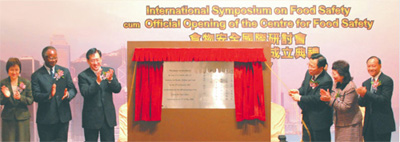
(I) International Symposium on Food Safety


With "Food Safety in the New Era" as its theme, the Interna tional Symposium on Food Safety cum Official Opening Ceremony of the Centre for Food Safety, organised by the Centre for Food Safety (CFS), was held on 12 and 13 January 2007 at the Kowloon Shangri-la Hotel. Guests and speakers from local, the Mainland and overseas food authorities/ institutions shared their experience, expertise and insight on risk assessment, risk management and risk communication with respect to food safety during the two event days. The participants benefited greatly from the discussions. Here are some pictures taken by young reporter at the Symposium.
(II) Public Consultation Forums on Amendments to the Preservatives in Food Regulations
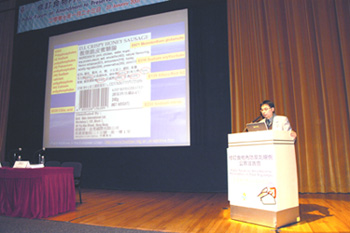
To introduce to the public on the proposed amendments to the Preservatives in Food Regulations and to seek their views on the subject, CFS held two public consultation forums on January 23 and February 7 at the Hong Kong Science Museum and the Hong Kong Central Library respectively. At the forums, views were freely expressed and the proposed amendments actively discussed. Before the proposed amendments are finalised, CFS will thoroughly consider the views expressed by the public at the forums and through other means.
